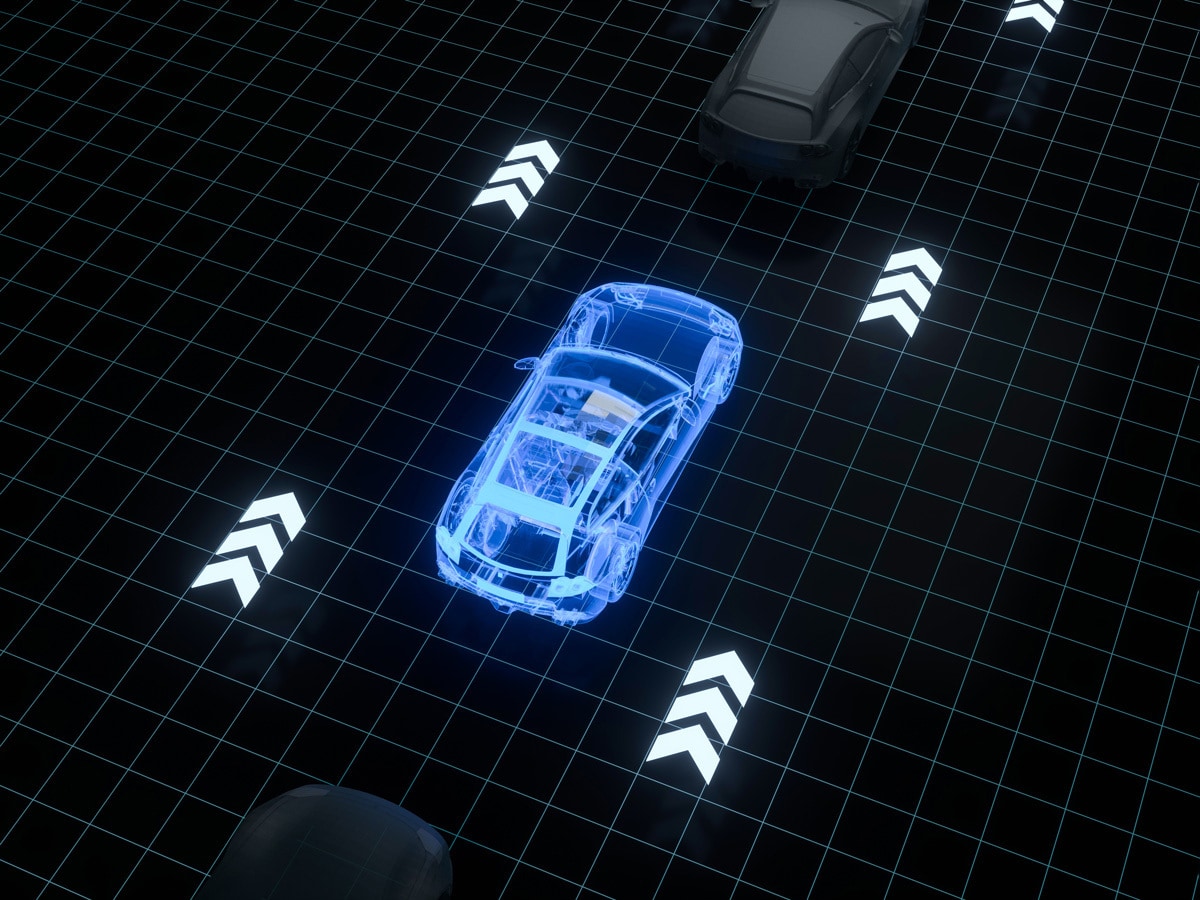The autonomous vehicle market is tipped to grow at over 25% CAGR until 2030, with key players like Tesla and Nvidia fuelling that growth. However, the progress towards fully self-driving cars has been slower than hoped, which one investor believes presents a buying opportunity.
- Automated vehicle market set to grow at over 25% CAGR to 2030.
- Is Tesla’s technology safe?
- How to invest in autonomous vehicles: the ARK Autonomous Technology & Robotics ETF is up 36.3% in the past six months.
Autonomous vehicles comprise a clearly-defined theme in its own right, but it has significant overlap with several others. One obvious example is traditional carmaking, many of whose leading incumbents, such as Toyota [7203.T], Ford [F] and General Motors [GM], are entering the autonomous vehicle market.
Of course, there is also a pronounced overlap with electric vehicles (EVs), with the vast majority of autonomous vehicles being either electric or hybrid.
Artificial intelligence (AI) and related fields such as computer vision and robotics also interact with the self-driving theme: Anthony Ginsberg, founder and CEO of GinsGlobal Index Funds, told Opto Sessions in May that “what Tesla [TSLA] has produced is, frankly, more a robot on wheels than a traditional motorcar”.
Meanwhile, the autonomous vehicles theme has its own subdivisions, including autonomous trucks and taxis.
Research from Precedence Research published in May predicts the global autonomous truck market will grow at a CAGR of 17.49% from 2022 to 2032, reaching $5.4bn, up from $1.3bn in 2023. Also in May, Sam Korus of ARK Invest wrote that the firm expects autonomous trucks like Tesla’s Cybertruck will disrupt traditional auto markets, as “most automakers fund the development and sales of unprofitable EVs with profits from their gas-powered truck sales”, adding that “traditional automakers could end up in trouble” if the Cybertruck is a hit.
Allied Research expects the robo-taxi industry to grow at a CAGR of 67.8% between 2023 and 2030, from $1bn to $38.6bn.
Alec Lucas, research analyst at Global X Funds, told Opto that autonomous taxi services “such as those provided by Google’s [GOOGL] Waymo or GM’s Cruise could be an important growth vector for the industry”.
Research from Facts & Factors suggests the autonomous vehicle theme as a whole could grow from $25.2bn in 2021 to over $197bn by 2030, with a CAGR of 25.8%.
Safety and firsts
Ford registered a breakthrough in April 2023 when it received Europe’s first-ever approval for hands-free driving, for its Mustang Mach-E cars on the UK’s motorways. While the technology allows drivers to take their hands off the wheel and feet off the pedals, it still requires attention to be paid to the roads.
Tesla has linked its prospects directly to autonomous driving technology, with CEO Elon Musk saying on 16 June at the VivaTech innovation conference in Paris that the company’s market cap depends on solving the challenge: “The value of autonomy is so high, that even if you have a discount, a percentage probability of autonomy happening, that is so incredibly valuable.
A 10 June report in the Washington Post raised questions over how close Tesla is to solving that challenge, despite Musk having made claims for almost a decade that the company was on the cusp of doing so.
The report showed that the number of collisions and deaths involving Tesla’s self-driving function has risen over recent years. While the increase in absolute numbers is largely down to more Teslas being on the road, a former National Highway Traffic Safety Administration senior safety advisor told the Post that “Tesla is having more severe — and fatal — crashes than people in a normal data set”.
However, Tesla’s most recent impact report showed that its ‘autopilot’ and ‘full self-driving’ (FSD) settings had respective accident rates of 0.18 and 0.31 per million miles driven, compared to 1.53 across the US’s entire vehicle fleet.
As Lucas points out, “Tesla’s Autopilot and FSD features are considered level-two autonomy, meaning that human interaction is frequently necessary while such features are active.” However, “in some cases, drivers have interpreted these features to mean full autonomy, which can lead to accidents.”
High potential stocks
Despite criticisms, Tesla is undoubtedly a leader within the space, and its stock acts as a barometer of investor interest in autonomous vehicles as a whole. Sylvia Jablonski, CEO and chief investment officer at Defiance ETFs, feels that Tesla currently trades well below its potential valuation.
“Tesla is on their way to becoming a global leader in this space,” Jablonski told Opto. “However, the technology isn't there yet to pursue widespread adoption. We believe that the stock price does not yet indicate success or full implementation of this technology, and upon its perfection, could propel the company and stock to new levels far beyond where Tesla stock is valued today.”
Another key player is Nvidia [NVDA]. As in AI, Nvidia’s advanced microchip technology underpins many of the technological developments being made in the field of self-driving technology. Additionally, Nvidia develops its own purpose-built, end-to-end self-driving software solutions.
Are you finding this content insightful? Leave us some feedback here.
The buying opportunity
Amir Weitmann, managing partner at Champel Capital, told Opto that “this industry is suffering from the problem of missed expectations, because things were promised that were too ambitious.”
Claims that level-five (fully autonomous) vehicles would be on roads by the early 2020s were always unrealistic, Weitmann believes. “Level three is only starting this year in a few cars. It will take five to seven years until there's mass adoption of level three. Level four will take another five to seven years. And level five, to the extent that is going to happen, is going to happen 20 years from now.”
However, the public pessimism around the missed targets creates, for Weitmann, a buying opportunity, thanks to what he calls the bipolarity of investors. “Either you’re living in euphoria and think tomorrow morning we’re going to be riding in flying cars… or the world has collapsed and nothing will ever happen.”
Weitmann’s view is both optimistic and patient: “Progress is not going to stop.”
Leaders in lidar
Computer vision solutions remain one of the key technical challenges that autonomous vehicle companies must overcome, with light detection and ranging technology (lidar) one of the frontrunners. Lidar bounces eye-safe laser beams off surrounding objects, enabling computers to build an image of their surroundings. A noteworthy producer is Innoviz Technologies [INVZ], which launched the industry’s first lidar-based bridge and tunnel collision avoidance system on 13 June.
“If you look at the advance of lidar over the past few years,” says Weitman, whose firm has a stake in Innoviz, “it has made quantum leaps. It's not where it was five years ago, or even three years ago.”
How to invest in autonomous vehicles
ETFs, or exchange-traded funds, offer an economical and diversified way to invest in a variety of stocks within a particular theme.
Funds in focus: ARK Autonomous Technology & Robotics ETF
The First Trust S-Network Future Vehicles & Technology ETF [CARZ] tracks the S-Network Electric & Future Vehicle Ecosystem Index. The fund offers exposure to the sectors of information technology (IT) at 53.67% of fund holdings, consumer discretionary at 27.75%, materials at 6.97%, industrials at 6.37% and communication services at 5.24%. CARZ is up 35.6% in the past six months.
The ARK Autonomous Technology & Robotics ETF [ARKQ] is actively managed, and as of 22 June Tesla is its top holding. Deere & Company [DE], which is planning to produce an autonomous tractor, also makes the fund’s top 10 holdings. The fund offers exposure to autonomous transportation, robotics and automation, 3D printing, energy storage and space exploration. ARKQ is up 36.3% in the past six months.
The Global X Autonomous & Electric Vehicles ETF [DRIV] tracks the Solactive Autonomous & Electric Vehicles Index. 35.4% of its holdings are classed as consumer discretionary, 31.1% as IT, 15.3% as industrials, 13.0% as materials and 5.2% as communication services. DRIV is up 27.4% in the past six months.
Disclaimer Past performance is not a reliable indicator of future results.
CMC Markets is an execution-only service provider. The material (whether or not it states any opinions) is for general information purposes only, and does not take into account your personal circumstances or objectives. Nothing in this material is (or should be considered to be) financial, investment or other advice on which reliance should be placed. No opinion given in the material constitutes a recommendation by CMC Markets or the author that any particular investment, security, transaction or investment strategy is suitable for any specific person.
The material has not been prepared in accordance with legal requirements designed to promote the independence of investment research. Although we are not specifically prevented from dealing before providing this material, we do not seek to take advantage of the material prior to its dissemination.
CMC Markets does not endorse or offer opinion on the trading strategies used by the author. Their trading strategies do not guarantee any return and CMC Markets shall not be held responsible for any loss that you may incur, either directly or indirectly, arising from any investment based on any information contained herein.
*Tax treatment depends on individual circumstances and can change or may differ in a jurisdiction other than the UK.
Continue reading for FREE
- Includes free newsletter updates, unsubscribe anytime. Privacy policy





